The River Lealt has dug a deep gorge into which its waters plunge. The platform there provides a view of the marvellous abyss. But there is more.
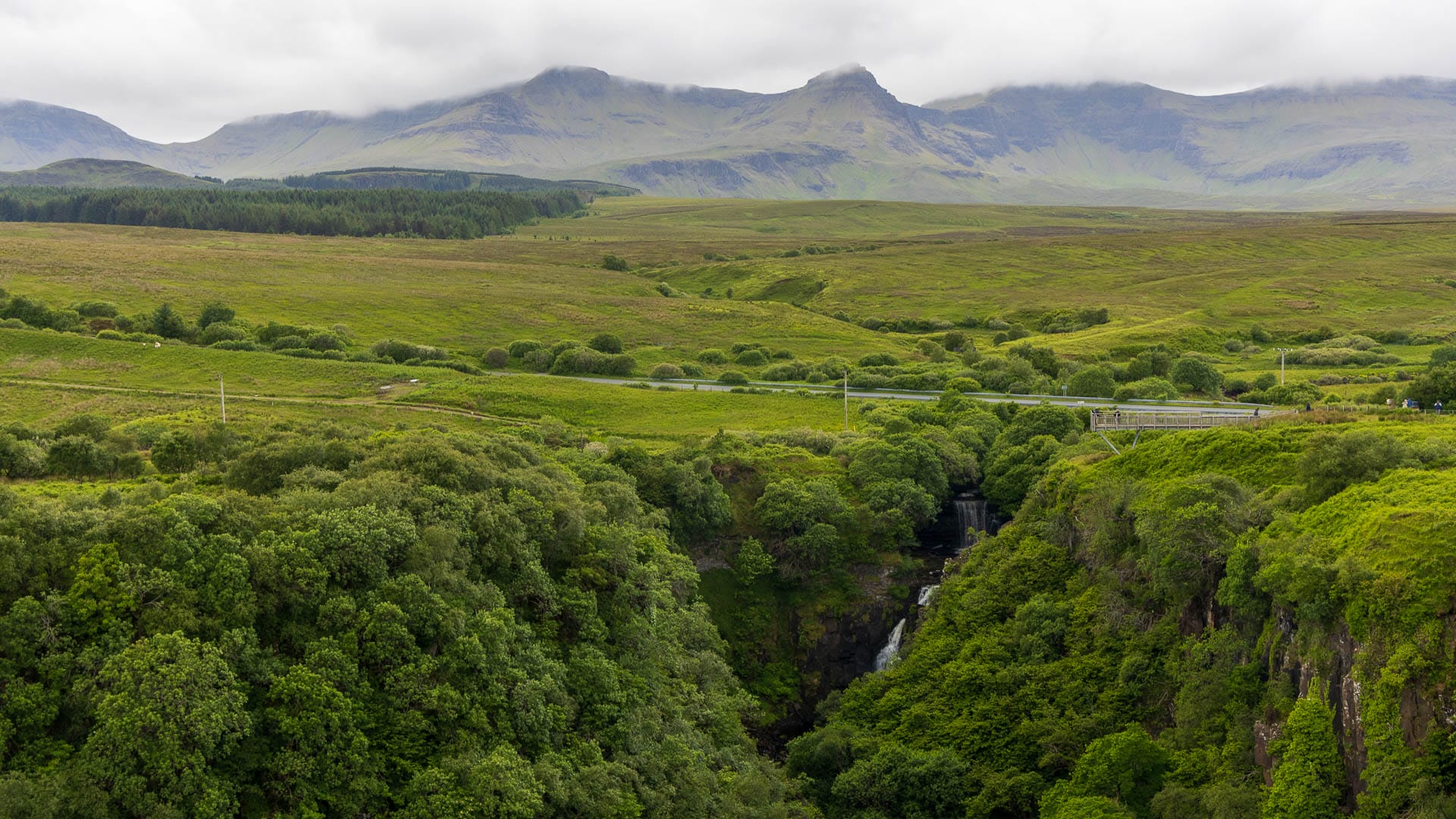
The Lealt Falls are located directly on the beautiful road along the Trotternish Mountains. The water of the small river falls over several steps down to the sea, where it reaches the sea at a pebble beach.
The force of the water has carved out a gorge that offers visitors a magnificent sight. Also thanks to a viewing platform.
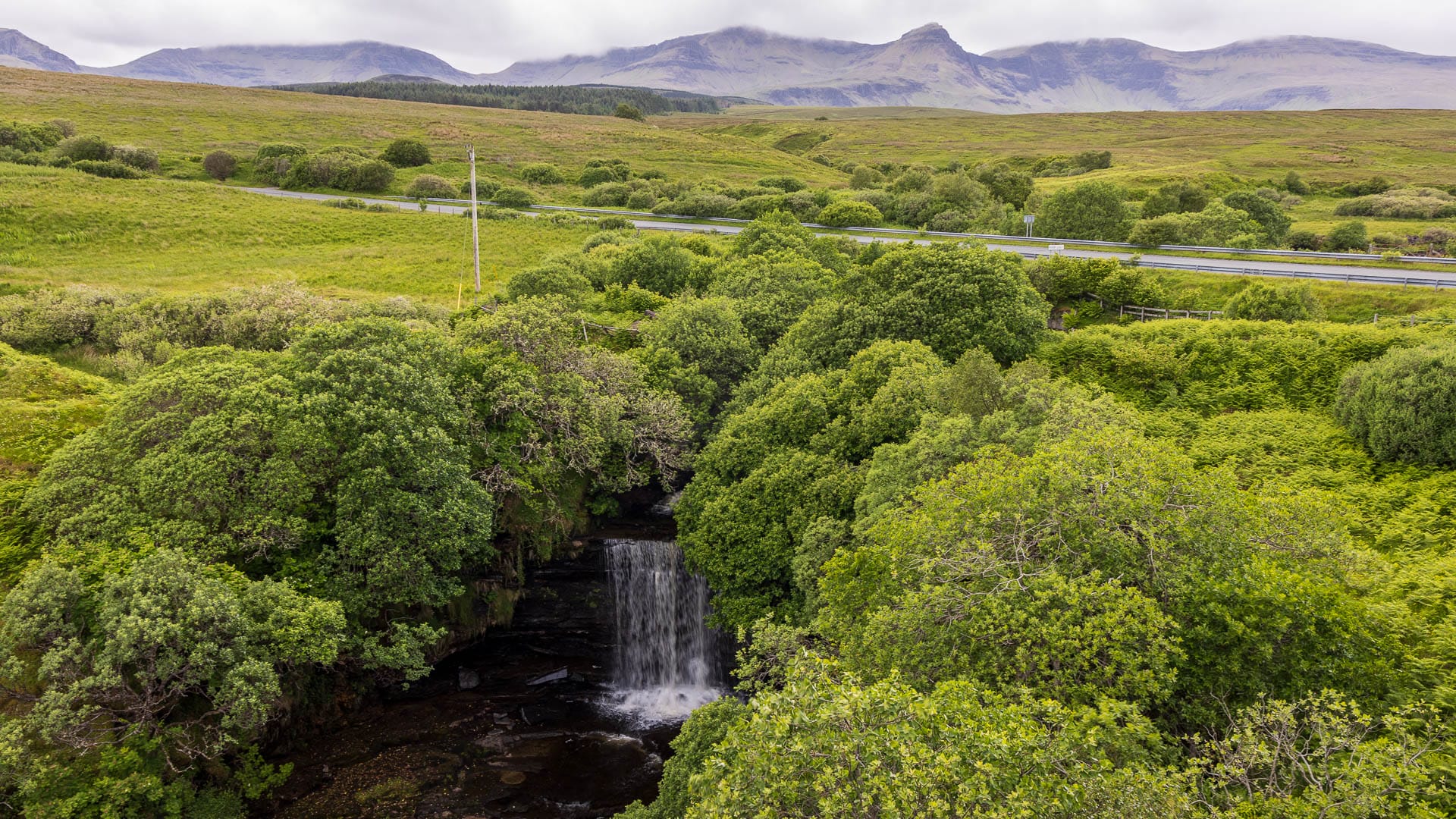
It is definitely worth stopping at the large car park to enjoy the view from this platform. But there is more to discover here. If you are good on foot, take the zigzag path down to the bay. There you will find the remains of an old factory and salmon fishermen’s huts.
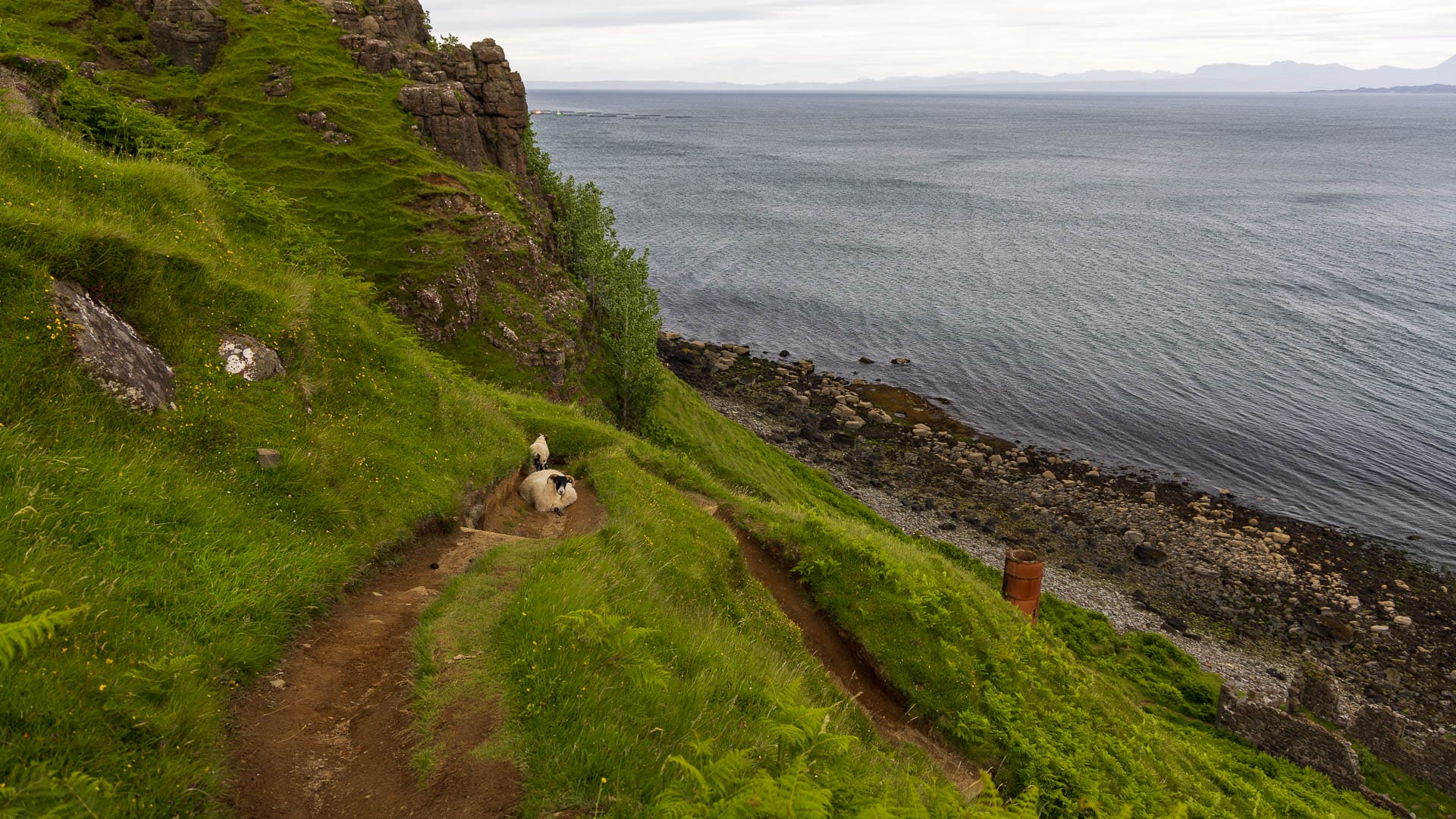
If you take a few steps into the gorge from there, you will discover the last waterfall of Lealt Falls – and it is another fantastic sight.
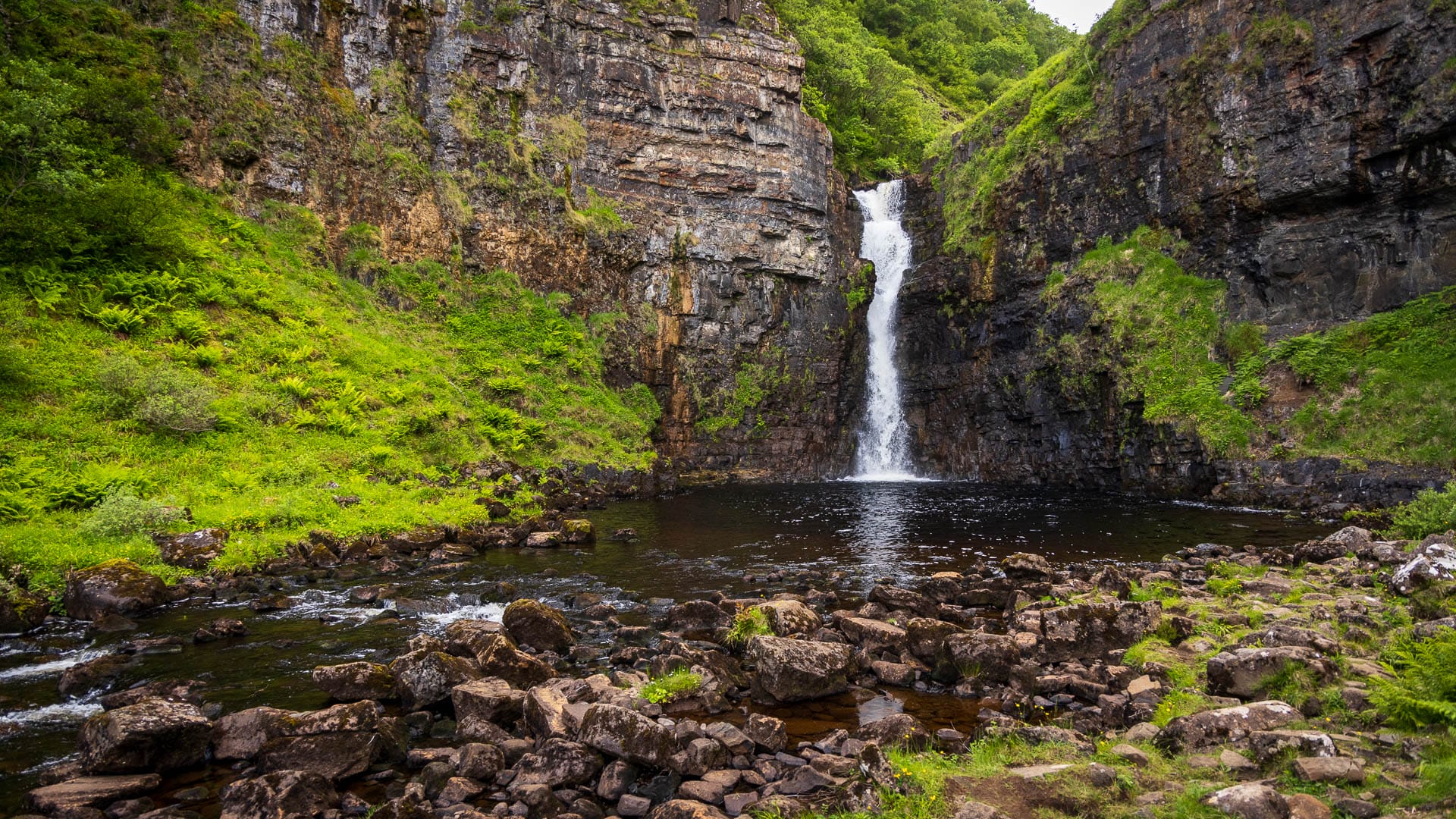
The stop at Lealt Falls is definitely worthwhile. If time, weather and fitness allow, I also recommend the descent to the bay. This offers many different views of the landscape and the sea.
Knowledge: Lealt Falls and the diatomaceous earth
On the beach below, where the Lealt flows into the sea, are the ruins of various buildings. Among them is a large, rusty chimney. It was used to produce a material that can be used in many different ways. It is called diatomite, but is better known in Germany as kieselguhr. It is a white rock consisting of the shells of diatoms. It can be used in toothpaste, cat litter or industrial filters, but also for dynamite.
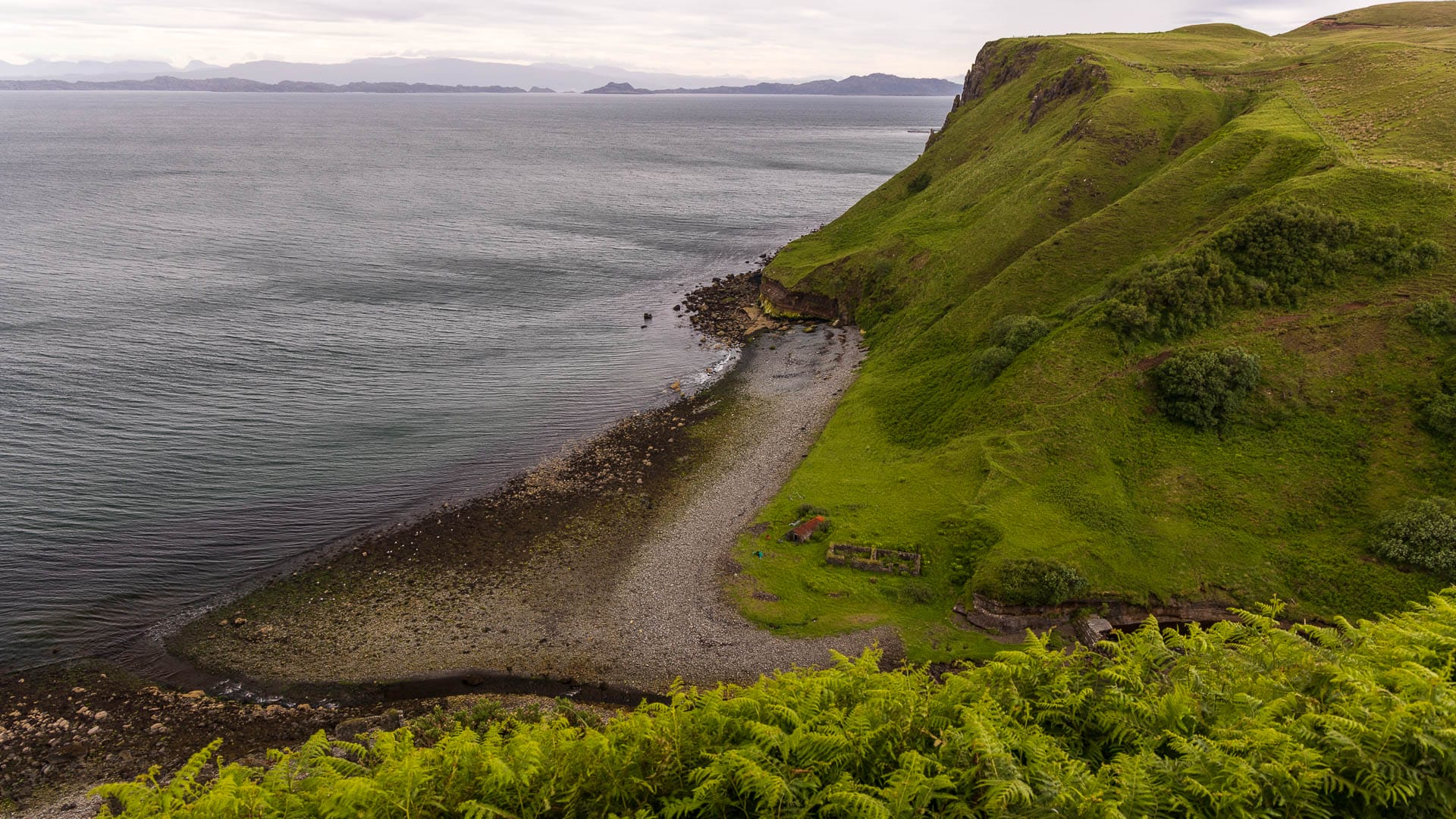
In Loch Cuithir, about 5 kilometres inland from the Lealt Falls, workers mined this diatomaceous earth, dried it and then transported it by hand to the falls via a railway. Down on the beach, it was then purified by burning and ground into powder. Clydepuffers, small steamships, could then land on the beach and pick up the finished product.
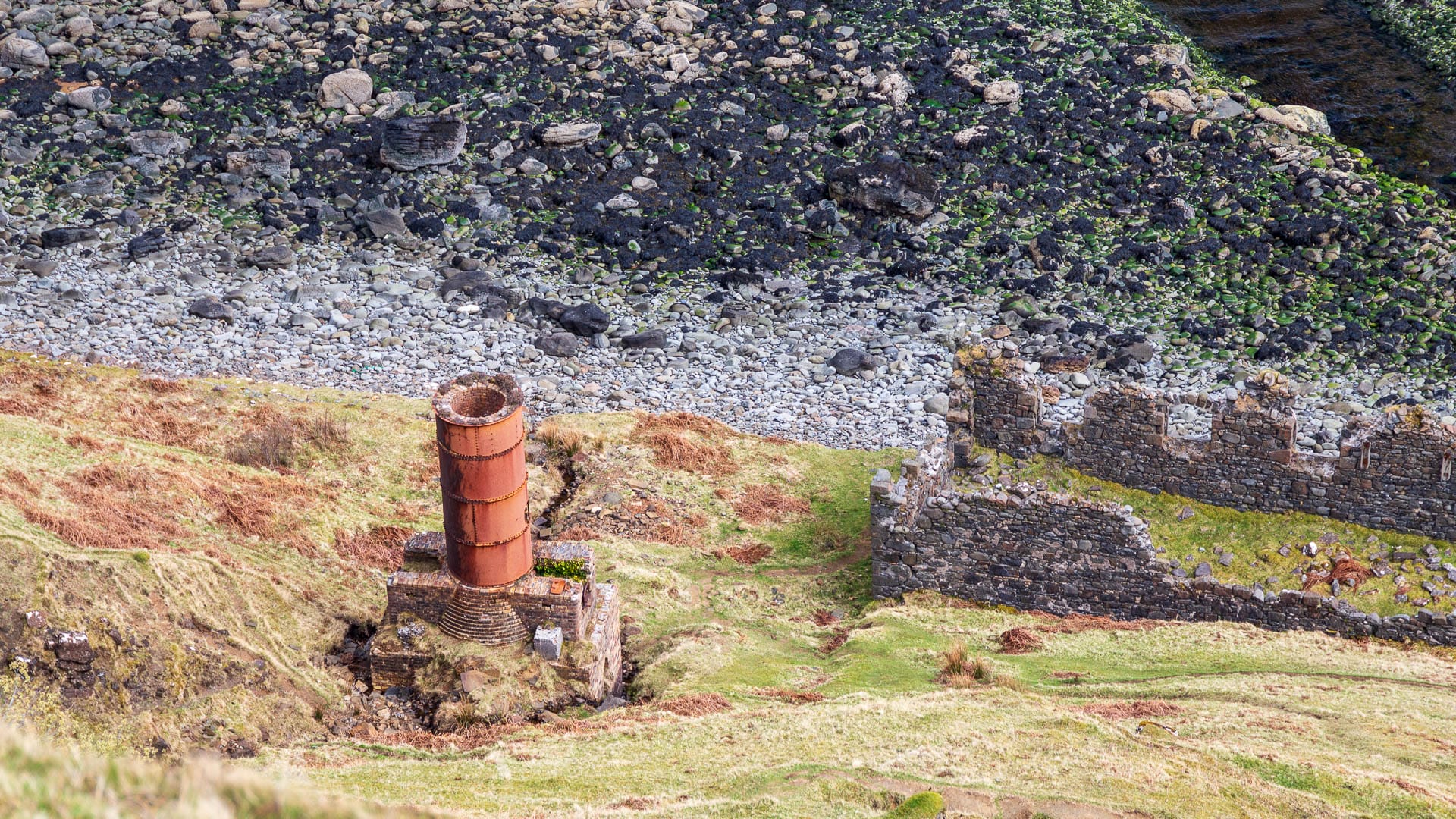
Diatomaceous earth mining began here in 1899. The equipment, including for the railway, came mainly from Germany. And rumour has it that even during the First World War, submarines still came here to take on water. The business continued until the 1950s, after which it was no longer profitable.
The place is called “An Leth Allt” in Gaelic. “Allt” means “stream”, “Leth” is “half” or “divided”. So it is the divided stream.
By the way: There is also a walk from the car park to Loch Cuithir. It is described on Walkhighlands or on a board right by the waterfall.
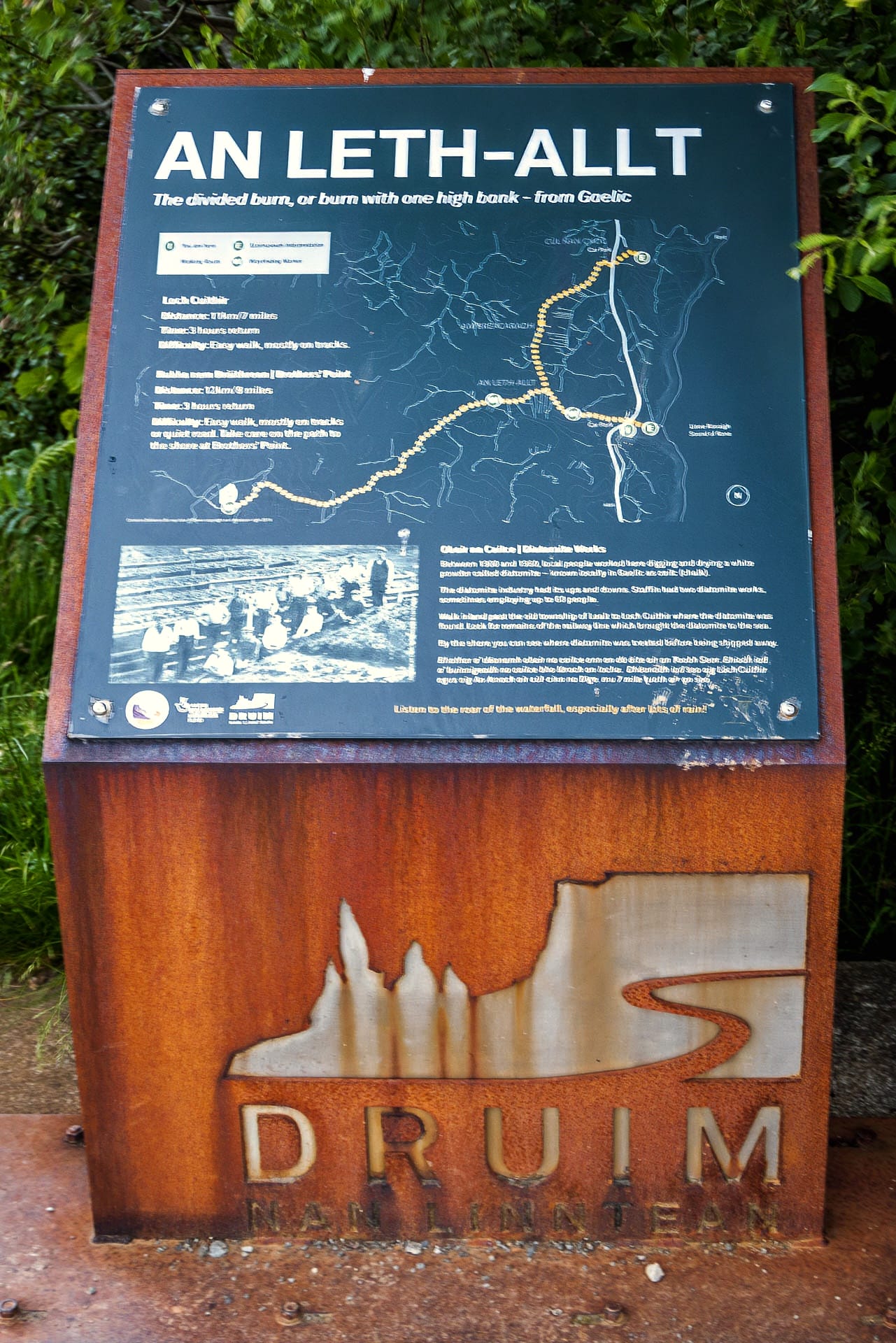
How to get there
With satnav: Enter “IV51 9JW” into the satnav.
Without sat nav: In Portree, take the A855 north towards Staffin. Pass the huge car park at the Old Man of Storr and the Rigg Viewpoint. The car park for Lealt Falls will then appear on the right.